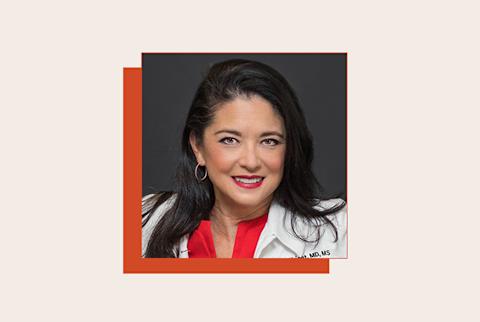Advertisement
4 Realistic Steps To Finally Get Toned (Without Counting Calories!)


When it comes to fitness, the days of "skinniness" as the ultimate goal are over. Today, people want strength, speed, and health—not to fit into a smaller size but to unlock their body's full potential.
This shift in mindset, often referred to as body recomposition, is about replacing fat with lean muscle. It's not about deprivation; it's about abundance.
According to Vonda Wright, M.D., renowned orthopedic surgeon, author, and member of mindbodygreen's scientific advisory board, this revolutionary approach is reshaping women's health.
So, how do you get started? Here's everything you need to know:
1. Eat to build muscle
First things first: Forget everything you've been told about cutting calories to get toned. If you want to build muscle, you have to eat—particularly protein.
"You have to eat to be toned," says Wright. High-quality protein, whether from whole foods or a whey protein isolate, is the foundation for muscle growth. The key is consuming at least 30 grams of protein per meal and aiming for around 2.5 grams of leucine (an essential amino acid found in protein).
She also emphasizes balance on your plate:
- Protein first (opt for lean meats, seafood, or eggs!)
- Complex carbs for fiber and energy (think sweet potatoes, beans, and avocado)
- Healthy fats (such as avocado or a drizzle of extra-virgin olive oil)
"We must get complex carbs from our diet, with a focus on fiber," Wright adds, noting that these carbohydrates not only provide fuel but also nourish your gut microbiome.
2. Lift heavy (Yes, heavy!)
Once your diet is dialed in, it's time to put that fuel to work. Wright's advice? Ditch the light weights.
"To build muscle and maintain strength as you age, especially for midlife women, you need to lift heavy," she says. This is particularly important as estrogen levels decline, reducing the natural anabolic stimulus for muscle growth.
Her advice? Focus on powerlifting moves, such as bench presses or pullups for upper-body exercises and squats and deadlifts to hit the lower body.
How heavy is heavy? Choose a weight you can lift four to six times with proper form. "By the fourth rep, it should feel challenging, and by the sixth, you're done," Wright explains.
To ensure proper technique, she recommends working with a knowledgeable trainer who can guide you through form and injury prevention.
3. Boost your cardiovascular health
Building muscle is only part of the equation. To truly recompose your body, you also need to challenge your cardiovascular system.
"Lifting and sprinting are the most effective ways I've seen to recompose our bodies," Wright says. But she cautions against overdoing high-intensity interval training (HIIT).
Instead, follow the 80/20 rule used by professional athletes:
- 80% of your workouts at a moderate, sustainable pace
- 20% of your workouts as all-out sprints
It's about balance. Wright explains that we need to get our heart rate up to improve cardiovascular health, but too much HIIT can lead to elevated cortisol, injuries, and exhaustion.
Whether you're sprinting on a treadmill, rowing machine, or bike, the goal is to push yourself for short bursts to stimulate fat-burning and enhance metabolic health.
4. Shift your mindset
Perhaps the most important step in body recomposition is changing the way you think about fitness and nutrition.
"We're trading fat for muscle, not losing weight," Wright says. "This is about abundance, not scarcity."
By focusing on what you're gaining—strength, energy, and health—you can leave behind the cycle of calorie counting and deprivation. Think of it as enhancing and adding to your life rather than subtracting from it.
The takeaway
Body recomposition is more than a workout plan—it's a lifestyle shift that celebrates strength, nourishment, and balance. By focusing on fueling your body with protein, challenging yourself with heavy lifting, and incorporating strategic cardio, you can transform not only your physique but also your mindset.